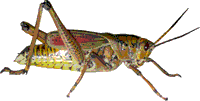Entomology Collections, General

Entomology Papers from Other Sources
Document Type
Article
Date of this Version
2006
Abstract
Two-day-old male cowpea weevils, Callosobruchus maculatus, fly upwind to a point source of female sex pheromone at three wind speeds. All beetles initiating flight along the pheromone plume make contact with the pheromone source. Analysis of digitized flight tracks indicates that C. maculatus males respond similarly to moths tested at several wind speeds. Beetles’ mean net upwind speeds and speeds along their track are similar (P > 0.05) across wind speeds, whereas airspeeds increase (P < 0.01) with increasing wind speed. Beetles adjust their course angles to fly more directly upwind in higher wind speeds, whereas track angles are almost identical at each wind speed. The zigzag flight paths are generally narrow compared with most moth flight tracks and interturn distances are similar (P > 0.05) at the wind speeds employed. The frequency of these counterturns across the wind line is almost constant regardless of wind speed, and there is little variation between individuals. The upwind flight tracks are more directly upwind than those typically seen for male moths flying upwind toward sex pheromone sources. Male moths typically produce a bimodal distribution of track angles to the left and right of the windline, whereas C. maculatus males’ track angles are centred about 0°. Preliminary examination of two other beetle species indicates that they fly upwind in a similar fashion.


Comments
Published in Physiological Entomology (2006) 31, 103–109.